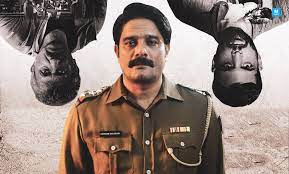
“Paatal Lok,” an Amazon Prime Original series, has captured the imagination of viewers and critics alike since its release. Created by Sudip Sharma and produced by Clean Slate Filmz, the production house owned by Bollywood actress Anushka Sharma, this gripping crime thriller offers a gritty portrayal of the socio-political landscape of contemporary India. The series, inspired by the traditional concept of ‘Paatal Lok’ (the netherworld), ‘Dharti’ (the earth), and ‘Swarg Lok’ (heaven), serves as a metaphor for the deep-seated corruption and violence pervading Indian society.
Table of Contents
Plot and Structure
“Paatal Lok” follows Hathiram Chaudhary, a jaded and disillusioned police officer, played by Jaideep Ahlawat. Chaudhary is assigned to a seemingly straightforward case that quickly spirals into a complex conspiracy involving powerful political figures, media moguls, and gangsters. As he delves deeper, Chaudhary finds himself entangled in a labyrinth of deceit and danger, which challenges his notions of morality and justice.
The narrative is structured in a non-linear fashion, interweaving the personal backstories of key characters with the main plot. This approach not only enriches the storytelling but also provides a deeper understanding of the motivations driving each character’s actions.
Characters and Performances
The ensemble cast delivers stellar performances, with Jaideep Ahlawat’s portrayal of Hathiram Chaudhary standing out as a career-defining role. His nuanced depiction of a man battling his inner demons while grappling with the harsh realities of his profession is both compelling and relatable. Neeraj Kabi as the sophisticated journalist Sanjeev Mehra, Gul Panag as Renu Chaudhary, and Abhishek Banerjee as the enigmatic Vishal ‘Hathoda’ Tyagi bring depth and authenticity to their roles.
The supporting cast, including actors like Ishwak Singh, Niharika Lyra Dutt, and Swastika Mukherjee, further enriches the narrative with their strong performances. Each character, irrespective of screen time, contributes significantly to the unfolding drama, making “Paatal Lok” a truly ensemble effort.
Themes and Social Commentary
“Paatal Lok” is not just a crime thriller; it is a mirror reflecting the fractures and fissures within Indian society. The series tackles a plethora of issues, including caste discrimination, communalism, media manipulation, and the pervasive influence of power and money. Through its unflinching portrayal of these themes, “Paatal Lok” challenges viewers to confront the uncomfortable truths lurking beneath the surface of everyday life.
One of the show’s most compelling aspects is its exploration of the ‘paatal lok’ — the metaphorical hell where the marginalized and oppressed reside. The series juxtaposes this with the ‘swarg lok’ — the world of the elite and powerful, highlighting the stark contrasts and deep-seated inequalities that define contemporary India.

Cinematography and Direction
Critical Reception and Impact
“Paatal Lok” has received widespread acclaim for its bold storytelling, complex characters, and unflinching portrayal of societal issues. Critics have lauded the series for its meticulous writing, sharp dialogues, and the moral ambiguity of its characters. The show has sparked conversations about the darker aspects of Indian society, prompting viewers to question their perceptions and prejudices.
The series has also been a significant milestone for Amazon Prime Video in India, showcasing the platform’s commitment to producing high-quality, original content that resonates with diverse audiences.

Conclusion
In conclusion, “Paatal Lok” is a landmark series that pushes the boundaries of Indian web content. Its gripping narrative, powerful performances, and incisive social commentary make it a must-watch for anyone seeking a deeper understanding of the complexities of contemporary India. As Hathiram Chaudhary navigates the treacherous paths of ‘paatal lok,’ viewers are compelled to reflect on the shadows within their own world, making “Paatal Lok” not just a series, but a poignant social critique.









